Another Update to The South America Gear List: Our Complete Overlanding Gear List can be found HERE.
Update: After spending a year in South America and beating on our gear we wanted to give an update on how our stuff held up. It is definitely a sign of good quality piece of gear when you use it every day (and use it hard) and it keeps in good shape.
After 11 months of working in Vancouver we only have one more month to go before we step on a plane, jump into our truck, and hit the road for a year of travel.
When we first drove away from Vancouver in October 2013 we didn’t have maps, guidebooks, or even appropriate outerwear. This bit us a few times when we didn’t know where we were going and the navigator and driver had a brief disagreement (yikes!), or when we were freezing in jeans and a couple of hoodies at the top of Volcan Acatenango. We learned a lot from our first 8 months on the road and this is shown by what we’re packing this time.
For a great overall gear list make sure to reference Life Remotely’s Packing List. You won’t need everything that they needed, but it’s a great reference to see if you’re forgetting anything that may be important to you. We had forgotten to include a first aid kit before reading their list. Duh!
Disclaimer: You don’t REALLY need any of this stuff to hit the road and have fun. We had a blast and didn’t have any of this the first go-round.
Navigation: Skobbler GPS, iOverlander, National Geographic Maps, Delorme inReach Explorer and Lonely Planet Guidebooks
We started using the Skobbler GPS app (search GPS Nav) on our iPhone 4 partway through our last trip and loved it. It requires no mobile carrier and is dead-nuts reliable. Spend the $10 for the app and the unlimited world maps and never fight with your significant other ever again! (You can always blame the GPS lady together if you don’t make the proper turn because, “…she didn’t give us enough warning!”)
Update: In Peru we switched over to the Maps Me app just for fun. It works just as well as Skobbler but lacks the routing ‘to and from’ option. In reality either app would be suitable and effective.
Sam from Song of the Road is my hero for starting the iOverlander project. This changes everything and we’re forever grateful. We can’t wait to use the app to view nearby campsites, wild camping areas, and spots to fill up our propane tank. We’ll still use the tried and true method of talking to real people we meet and getting recommendations from them, but iOverlander is like a giant safety blanket of campground database goodness.
Maps. We used novelty maps found in visitor centres en route last time. They weren’t always to scale and they definitely didn’t show all of the roads, but they were free! Paper maps are invaluable for planning and discussing routes with others so we stepped it up big time and bought maps of all of the South American countries. Legit! There are a few types to choose from, but we went with National Geographic Adventure Maps since we had heard a couple of good reviews. The maps don’t have to be perfect, but having something to spread across the hood of the truck and write notes on is too enjoyable to miss out on.
Update: We mainly used these maps for a general overview and planning. They are great if you have a route planning session with a fellow Overlander and want to write notes or circle destinations. By the time we reached Chile and Argentina we didn’t really use the paper maps that much but were glad we had them.
We have always travelled with The Lonely Planet Guidebooks so we grabbed one for each country we’ll be travelling through. These things are HEAVY, but after being frustrated using PDF versions on the last trip we’ll deal with the extra weight this time. There’s nothing like reading, making notes, and dog-earing a real book. Honestly, a lot of things in these books don’t apply to the average overland traveller, but the country’s history, details of the tourist attractions, and hostel list (when there’s no place to camp) come in handy. Sure, we’re still known to ignore all the guidebooks and do things our own way, but the more information you have at your fingertips the better.
Update: Again the Lonely Planet guides were great for a general overview and for taking notes. We used the Trekking in the Patagonian Andes guide quite a bit and ripped out the pages and stored them in Ziploc bags for multi-day hikes. The Trekking Guide is a bit out of date but most of the information is accurate and the sections regarding the flora and fauna were quite interesting and detailed.
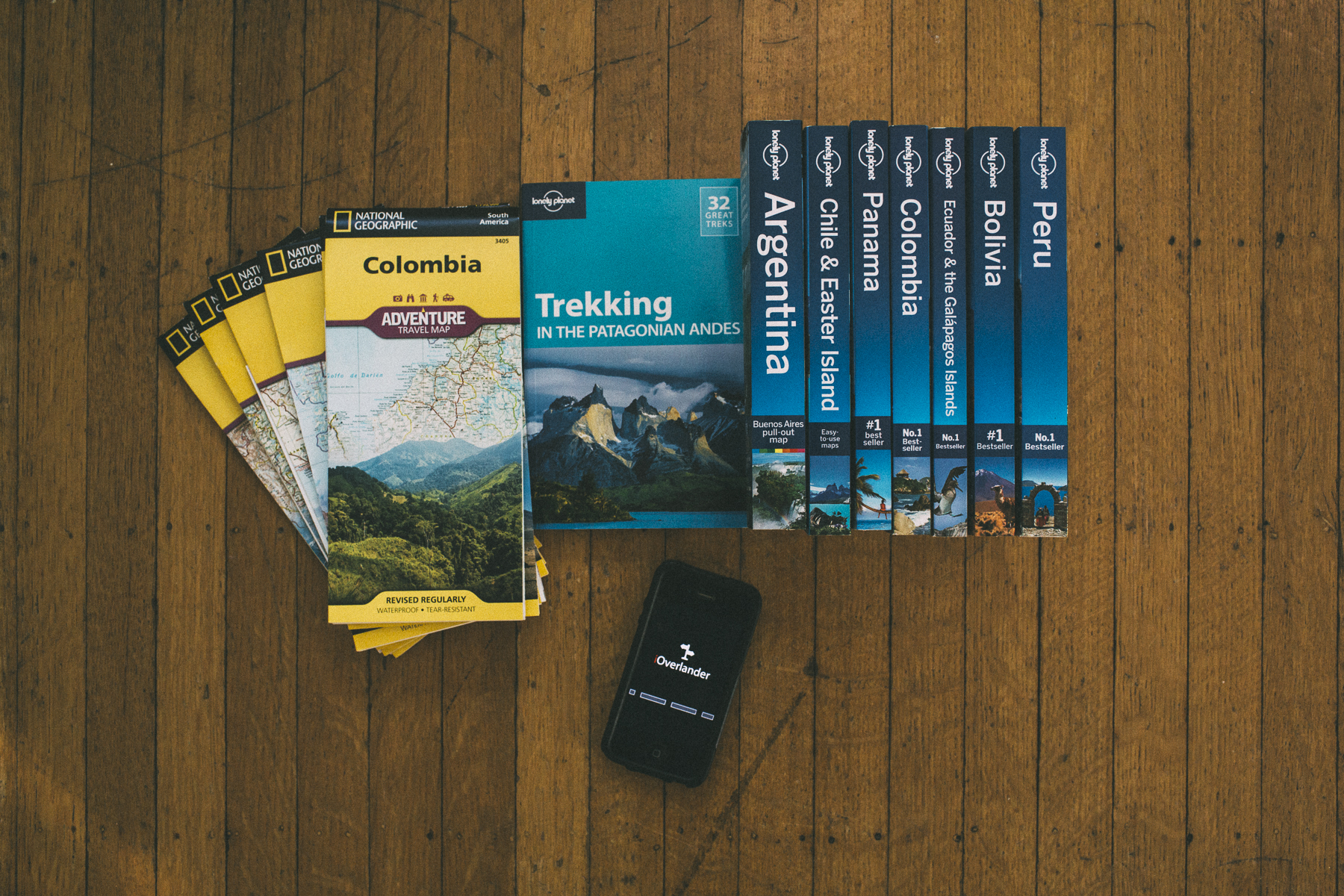
Additionally, inReach Canada has provided us with a new DeLorme InReach Explorer Two Way Satellite Communicator to help navigate the deep backroads and to communicate with friends and family for those times when wi-fi is non-existent.
Sony Alpha A6000 Mirrorless Camera
Richard shoots with his Canon 5D Mark III and doesn’t have a problem with it… except for the fact that it’s heavy, bulky, and an obviously expensive camera. We previously wrote about The Best Camera For Overlanding and how the best camera is the one you have with you. Unfortunately we missed photos because we decided we didn’t want to carry around the Canon or because Ashley didn’t want to deal with the giant DSLR. Sure, we also have our iPhones and GoPro Hero 2, but we wanted better quality images for not a lot more money.
Our solution was to to hock some of Richard’s backup DSLR camera gear on Craigslist so we could buy a new Sony Alpha a6000. It’s small, produces great images, and is easy to use. We’re looking forward to getting out in the mountains and trying it out!
Update: The a6000 is a perfect little camera for the size and price. We shot some video with it and were really impressed with the image quality. For photos, in the end Richard carried his Canon 5D Mark III on every single hike we went one. Totally worth it for the still images the full frame camera produces. If we didn’t have the DSLR, adding a couple of nice lenses to the Sony would be a great option to add to your South America gear list.
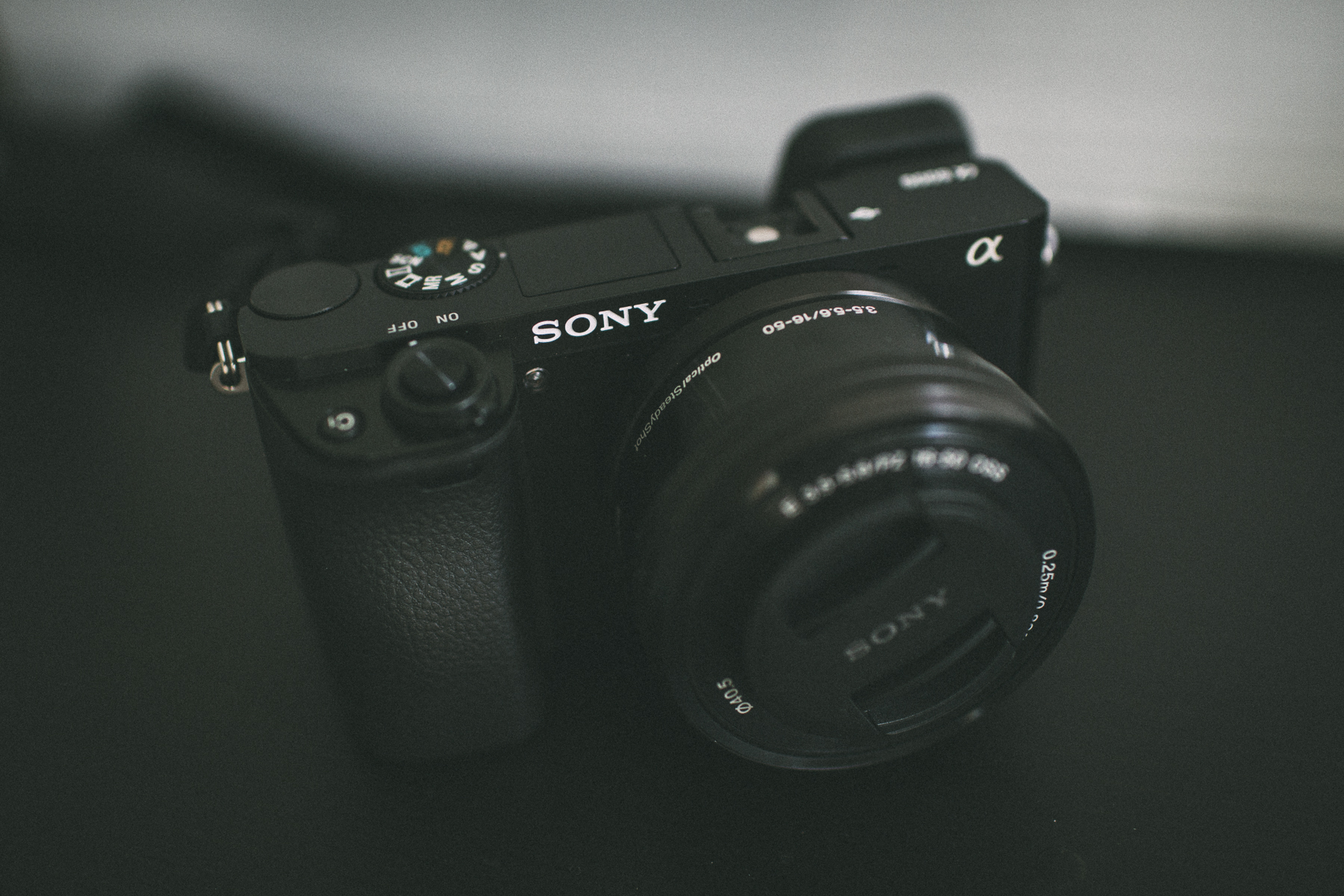
Marmot Never Summer and Ouray Sleeping Bags
What do you mean random comforters from our old apartment aren’t going to keep us warm? Most of the time this wasn’t a problem, but when we hiked a volcano or were camping at high elevations we were cold. Honestly, we packed some t-shirts and shorts last time because we’re heading to Mexico. Mexico is warm right? Beaches, sun, tequila…
That was all fine and good until we hit Patzquaro at around 7000ft and frost formed on the truck overnight. We bought a great Mexican blanket that kept us a little warmer, but for our trip to South America we’re also bringing Marmot Never Summer and Marmot Women’s Ouray down-filled sleeping bags. These -18C bags have kept us toasty for Canadian winter camping so we should be good to go for much of our trip south.
Update: These sleeping bags are one of our favourite purchases. They held up very well and kept us warm in the Bolivian Altiplano (in below freezing temps), Patagonian Andes and in Ushuaia. They loft up nicely and pack down small. We carried them on our multi-day treks and they are fairly lightweight. During our journey across Canada they didn’t disappoint and kept us warm in the Kootenay Rockies at freezing temperatures.
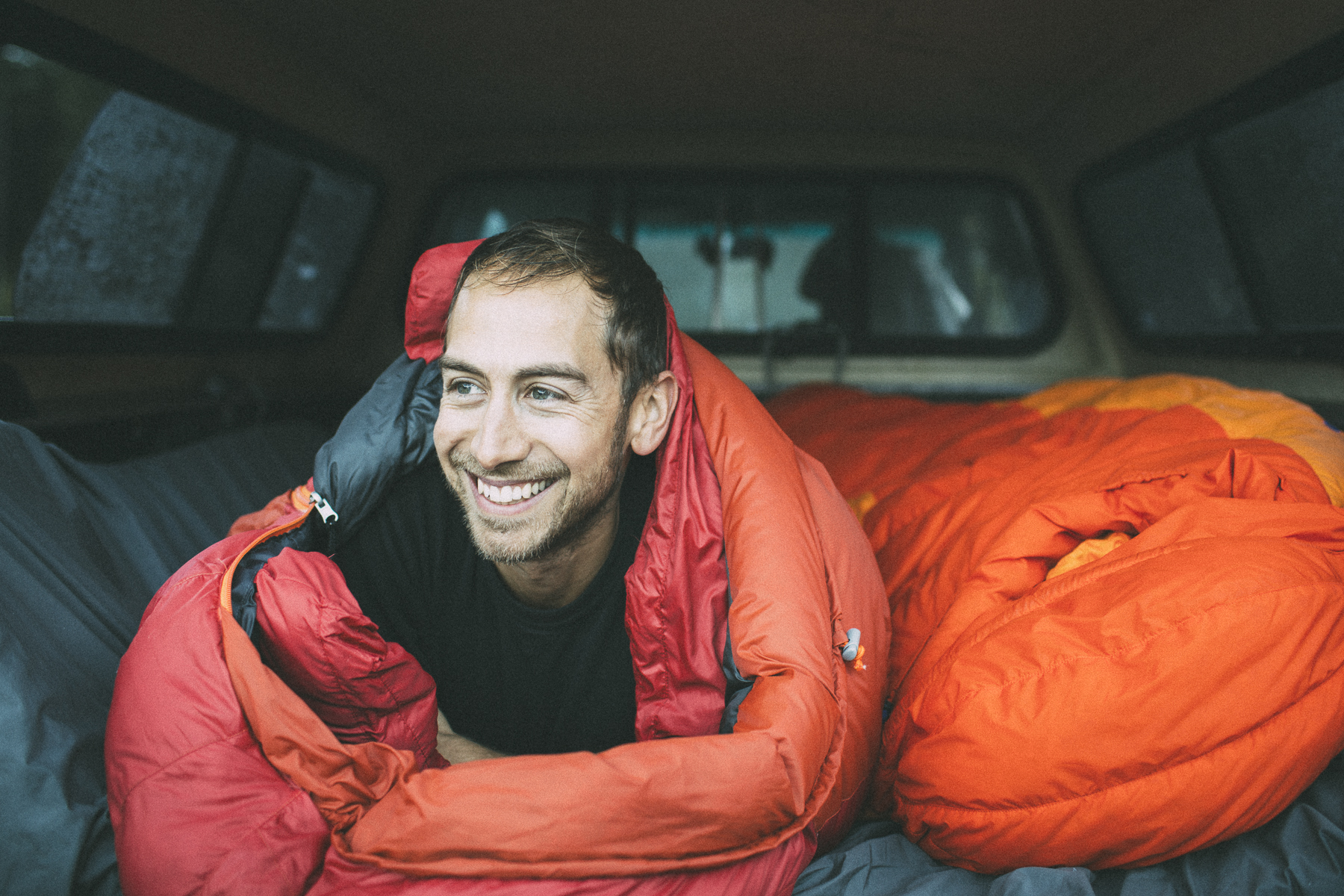
12V Heated Mattress Pad
Sure, we’re Canadian, we picked up some good Icebreaker wool socks, have our warm sleeping bags, and layers of outdoor gear, but Ashley still runs cold. For this, we’re taking a chance on a 12V Heated Mattress Pad. We’ve heard from camper and roof top tent dwellers that these work wonders to preheat your bed on a cold night. Time will tell how well this works, but we have dreams of preheating our mattress and sleeping bags while driving to a campsite and slipping into warm sleeping bags on a cold night. Mmmm… luxury!
Update: This Mattress Pad worked wonders in cold temperatures. Basically we would fire it up for about 30 to 60 minutes before we went to bed and the heat warmed up the down in our sleeping bags. Make sure to layer up your bedding — the pad worked the best placed underneath our sleeping bags with a thick mat, rug or blanket overtop of the sleeping bag to keep the heat in.
Arcteryx Atom LT Hoody
Our first thought was to pick up a couple of down-filled jackets, but we ended up purchasing two Arc’teryx Atom LT Hoodies instead. These synthetic insulated jackets are great for sitting around camp or packing for multi-day hikes. We went with synthetic because it’s durable and resilient. Down jackets require you to be a little more careful in wet weather etc and we know ourselves well enough that living in a truck we’re not easy on gear. These shouldn’t require any special care and that’s what we like to hear!
Update: These jackets ended up holding their own. They took quite a beating and look just as good as the day we bought them. One thing to consider though, they weren’t warm enough for certain parts of the Andes like Bolivia, some high-altitude areas of Peru, and Southern Patagonia. I would recommend purchasing a thicker down or synthetic jacket for those areas, especially for outdoor activities such as cooking, hanging out at camp, doing dishes, etc.

ARB Awning 1250 and Awning Room 2000
We seriously lucked out with the great weather throughout Central America. Unfortunately we’re expecting a little more rain this time around so we wanted to improve our camp life situation when the regular sunshine turns into liquid sunshine.
ARB USA hooked us up with a 4ft long ARB Awning 1250 that we’re going to mount off the back of the truck. Not sure how much fun it will be bringing this on the plane, but at least it’s not 6ft long!
We also picked up an ARB Awning Room for our existing ARB Awning 2000 so we can have a little “indoor living space” as well.
Update: We were definitely glad we mounted the awning off the back of the truck for some protection from the sun or rain while digging things from the bed of the truck. Unfortunately we didn’t use the Awning Room much, mostly due to the fact that we weren’t in one place for long enough to set it up.
Patagonia Torrentshell Rain Jacket
Cold, wet, hungry. We have heard that you can be two out of three of these and still be in a good (or at least, decent) mood. To make sure we avoid the “wet” part we invested in a couple of Patagonia Torrentshell rain jackets. Just the name inspires confidence! They’re not a super high-end Gore-Tex hard shell, but they are 100% waterproof and didn’t cost an arm and a leg. So far they have been proving their worth in rainy Vancouver!
Update: These jackets failed miserably. My zipper was very difficult to do up and caught in the fabric constantly, the colour bled through the material, and they were super unhelpful in the rain. Obviously they aren’t Gore-Tex but we came back soaking wet through our clothes and wondered what the heck happened. We returned both jackets to the Patagonia store in Santiago, Chile and exchanged them for some other items. I exchanged mine for a black down vest (which I love) and Richard exchanged his for a t-shirt and some long johns – both great items.
As an alternative, Westcomb hooked us up with some super legit rain jackets (Fuse LT Hoody for me and Apoc Classic for Richard) made in our home province of British Columbia. These jackets passed the test with flying colours (namely Blue and Red). The women’s fit like a glove, slim in the waist with a slight flare at the hip. The hood is huge, which I love (so all my hair can fit and potentially you could fit a helmet under it if skiing/snowboarding). There is a fleece liner around the face and the wrists. The material inside is very soft and you don’t get that gross rain jacket sticking to your skin thing happening when you wear them with a tank top underneath. Along with the sleeping bags these jackets were one of our favourite pieces on our South America gear list.
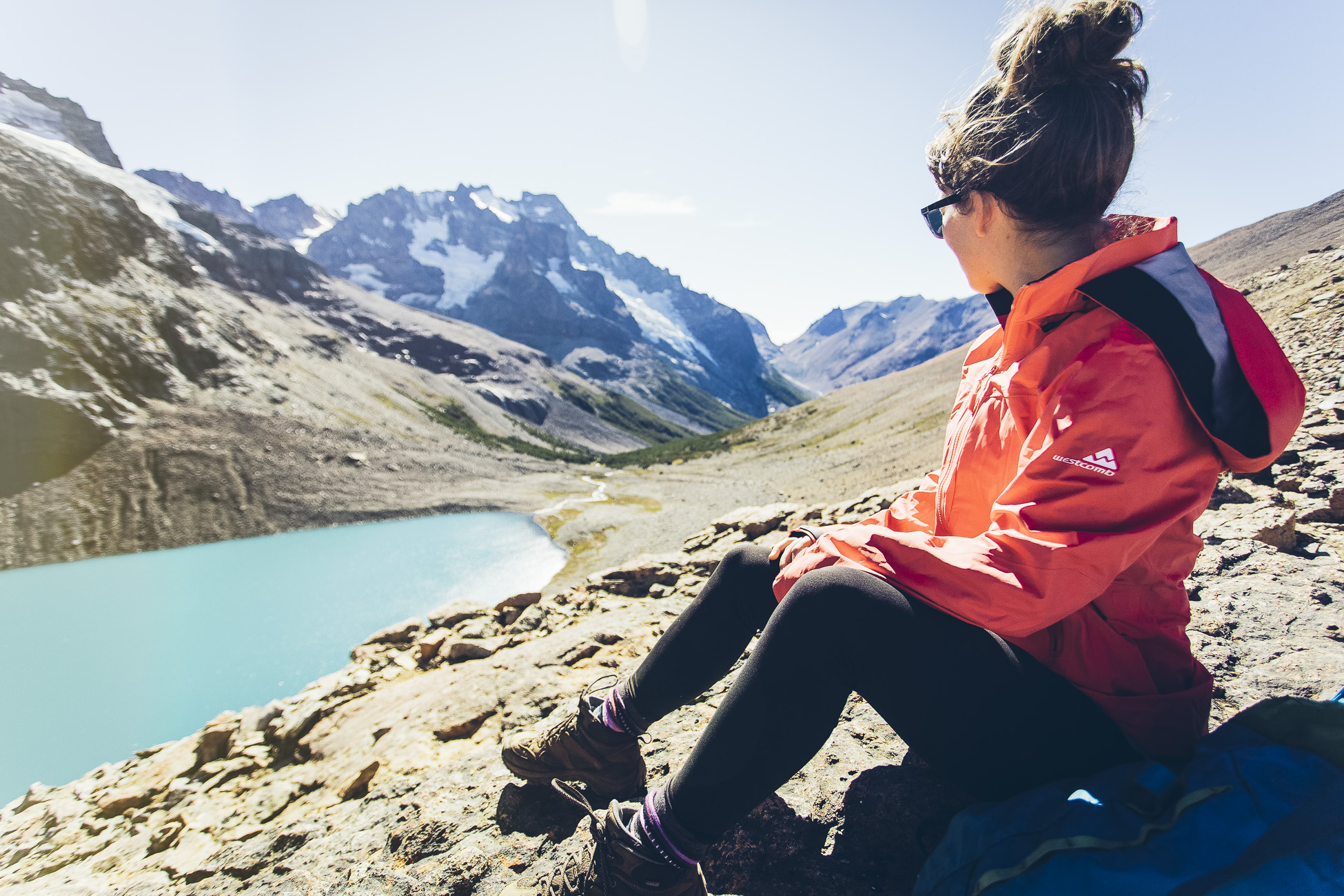
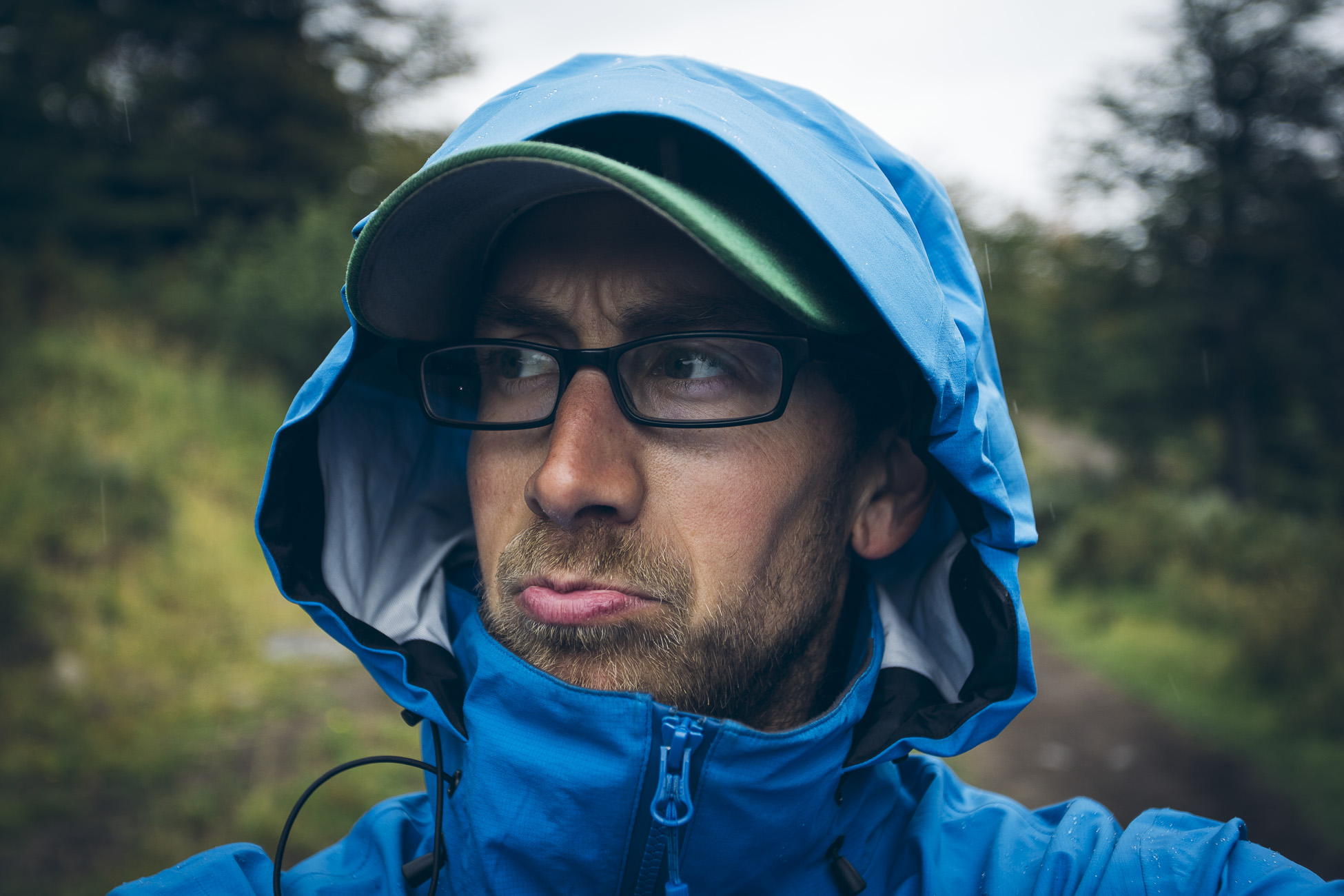
Nemo Helio Pressure Shower
Cleaning sucks. So we picked up this Nemo Helio Pressure Shower to not only clean us, but to act as a kitchen sprayer to wash dishes. Luis from Lost World Expedition gave us this awesome idea when we met him at the NW Overland Rally last year. Sure, Luis was using some pesticide spraying device (that he probably purchased new) filled with water but essentially it’ll do the same thing. Camplife has never been so easy!
Update: We loved the Helio and used it mostly for beach days and washing the sand off our feet. We hardly used it for washing dishes for some reason, maybe we just got lazy. We still think it is a great purchase though and hopefully we can get motivated to bring it out during our cross-Canada trip.
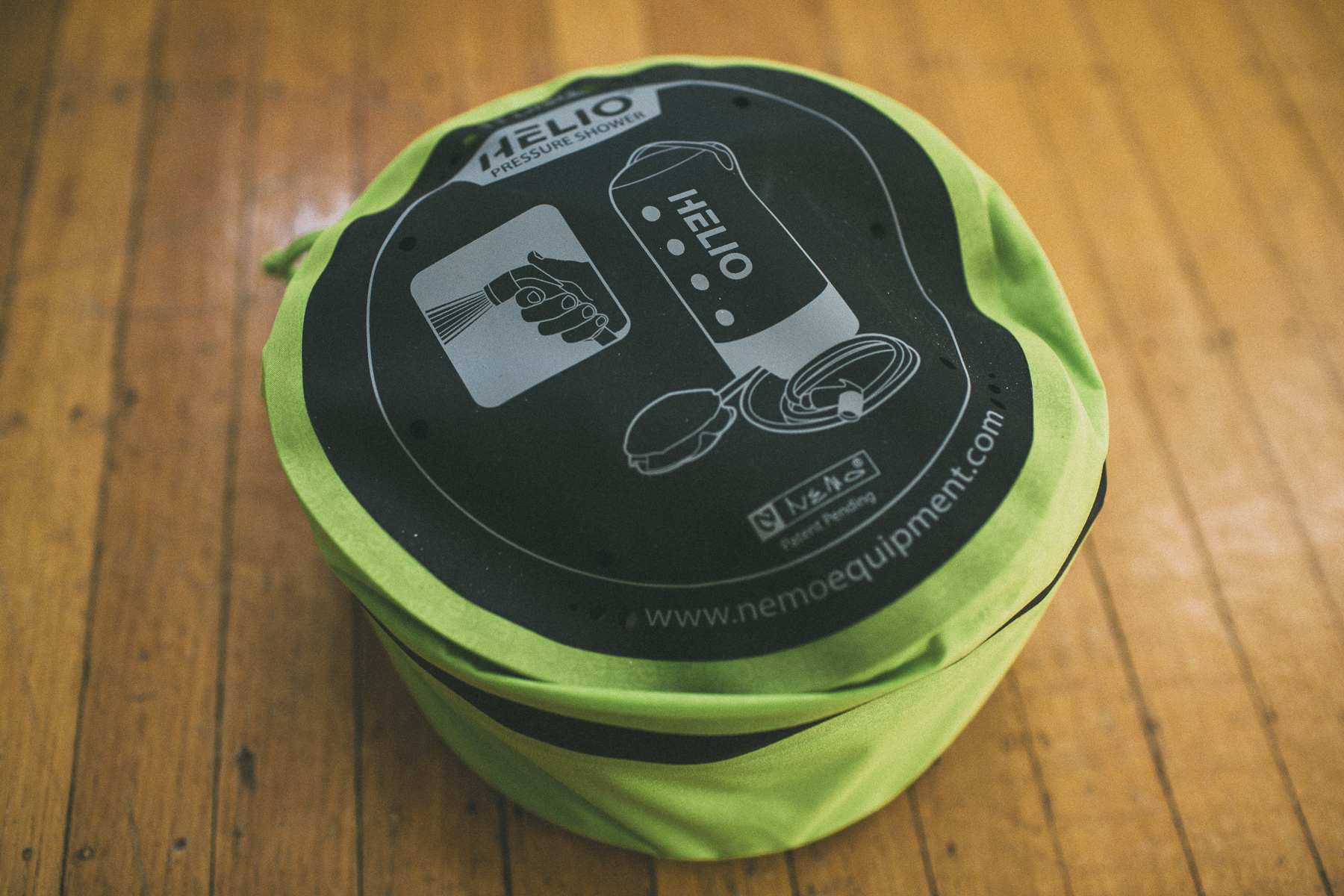
LED Light Strips
These LED strip lights are going to get installed in our tent for sweet sweet night reading in roof top tent. We should have enough to shed some light under our awnings as well. We’ll use these generic connectors
to connect the lights to our house battery. We stumbled across the Adventure Parents post about this and loved the idea. Let there be light!
Update: The LED Light Strips remain uninstalled at this time. Woops! [note about awesome christmas lights]
BlueSea USB and 12V Charger Sockets
Seriously, you can never have enough outlets to charge all of your electronic junk. We have a couple of Kindles, our iPhones, and camera that all use USB connections for charging. We’re going to add a Blue Sea Systems Dual USB Charger Socket and Blue Sea Systems 12 Volt Dash Socket
to our dual battery system.
Update: We used these every single day. #worthit
Jetboil Flash
Here’s the truth, on the road sometimes the only reason we need to boil water in the morning is to make delicious coffee. Instead of having to haul our Coleman stove and 10lb propane tank out of the truck every morning we now have the option to use our small Jetfoil Flash burner. Score. The faster and easier it is to get caffeine in us the better! Also, we’re hoping to spend some time backpacking in the Andes, so now we have a portable cooking system for that as well. Double score. It’s still unknown how easy it’s going to be to get fuel for this bad boy in South America, but our fingers are crossed!
Update: Another one of our favourite purchases. We literally used this Jetboil every day in Patagonia and whenever we ran out of propane in our large tank. We brought it on hikes and treks and it is lightweight and packs down well. It boiled water like a champ and took no time at all.
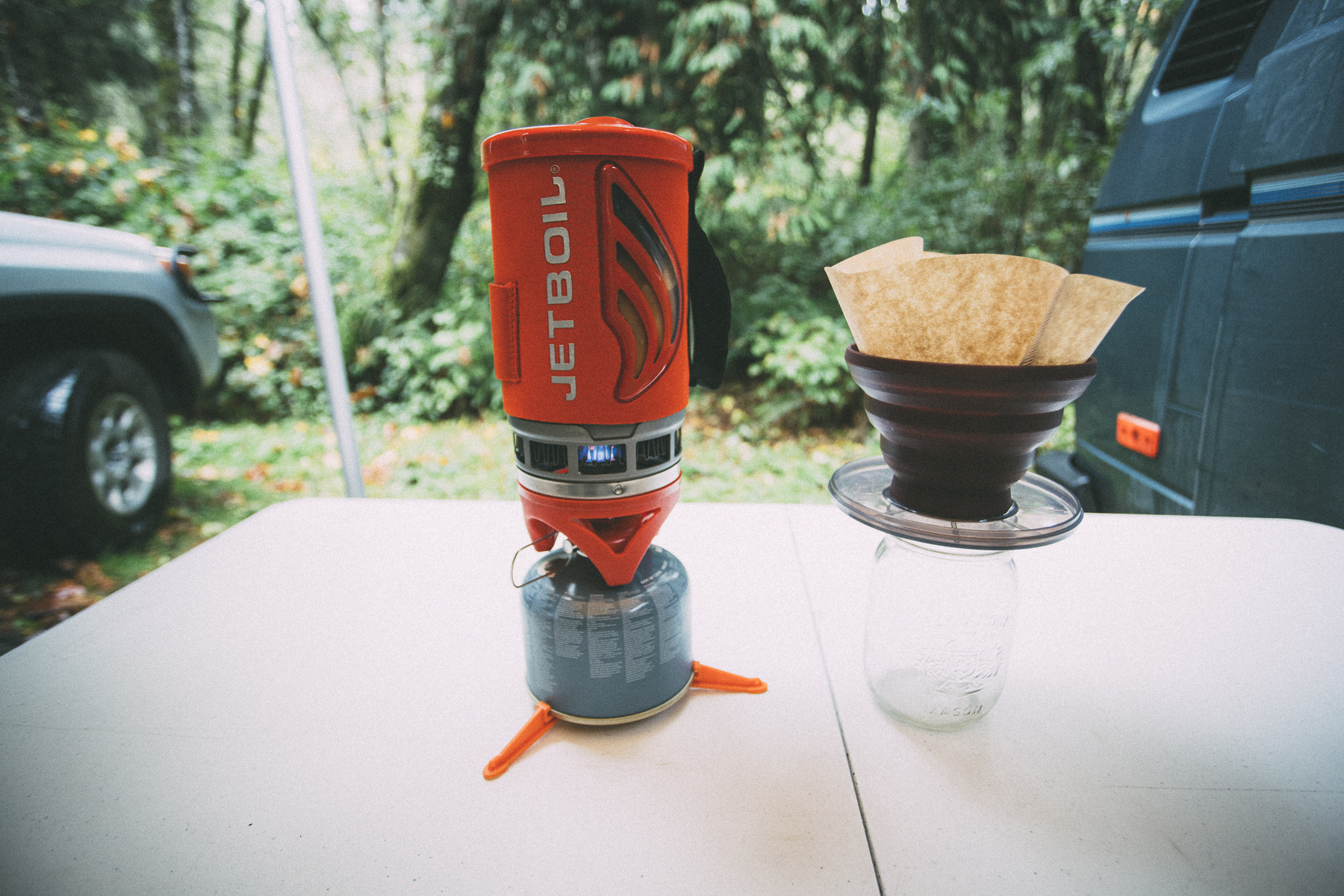
Overland Empire and Exofficio Clothing
It turns out that these companies were paying attention to the last trip and saw that Richard didn’t seem to change his clothes (i.e., even when a dog ripped the sleeve on his favourite shirt he just turned it into a sleeveless t-shirt!).
Honestly, we’ve been following Overland Empire since we started our trip. Their ethos, design and style resonated with us from day one so we were stoked when Mark contacted us. We’re beyond excited to be working with them as OE Ambassadors! Go check out their site and join the empire.
What do you think of when you hear Exofficio? Underwear, that’s what. Their Exofficio Men’s Give-N-Go Travel Underwear are said to be odour-resistant and moisture-wicking. Exofficio hooked us up with a few pairs these along with some pants and shirts that should work a little better than old jeans and cotton hoodies we were rocking before! Thanks again!
Update: All of our clothing held up well, and that is saying something since Richard wore his Exofficio shorts and pants literally every day and beat the crap out of them.
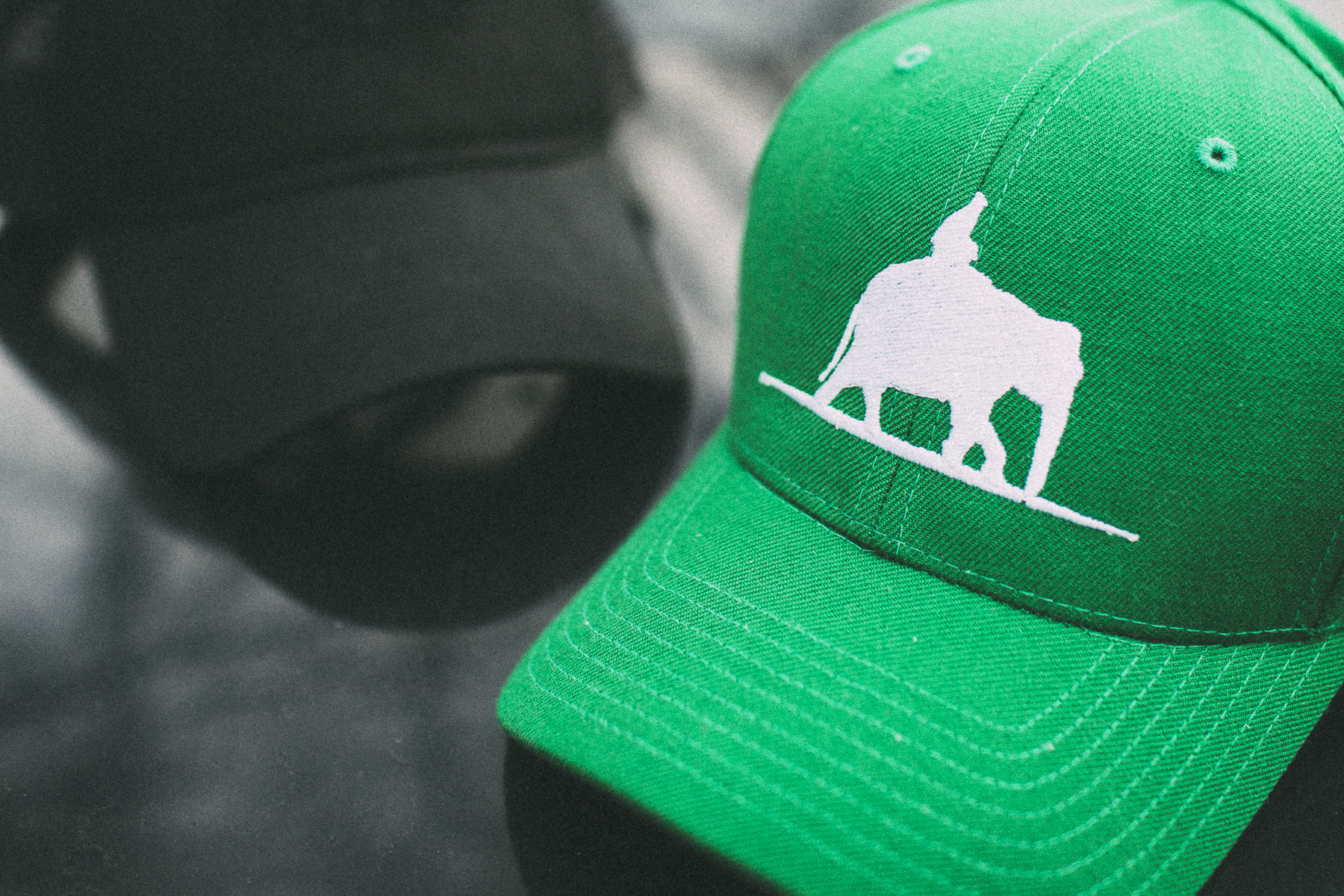
Kahtoola Microspikes
We’ve been using these Kahtoola Microspikes for the snowy/icy hikes in BC and Washington all winter. These are the perfect lightweight and inexpensive alternative to snowshoes or crampons. Looking forward to trying these out on the snowy Patagonian Andes!
Update: We didn’t even unpack these bad boys. There wasn’t enough snow to need them.
Now the only question is, how are we going to fit all of this gear on the plane?
Now we want to hear from you! What is on your South America Gear List for overland travel?

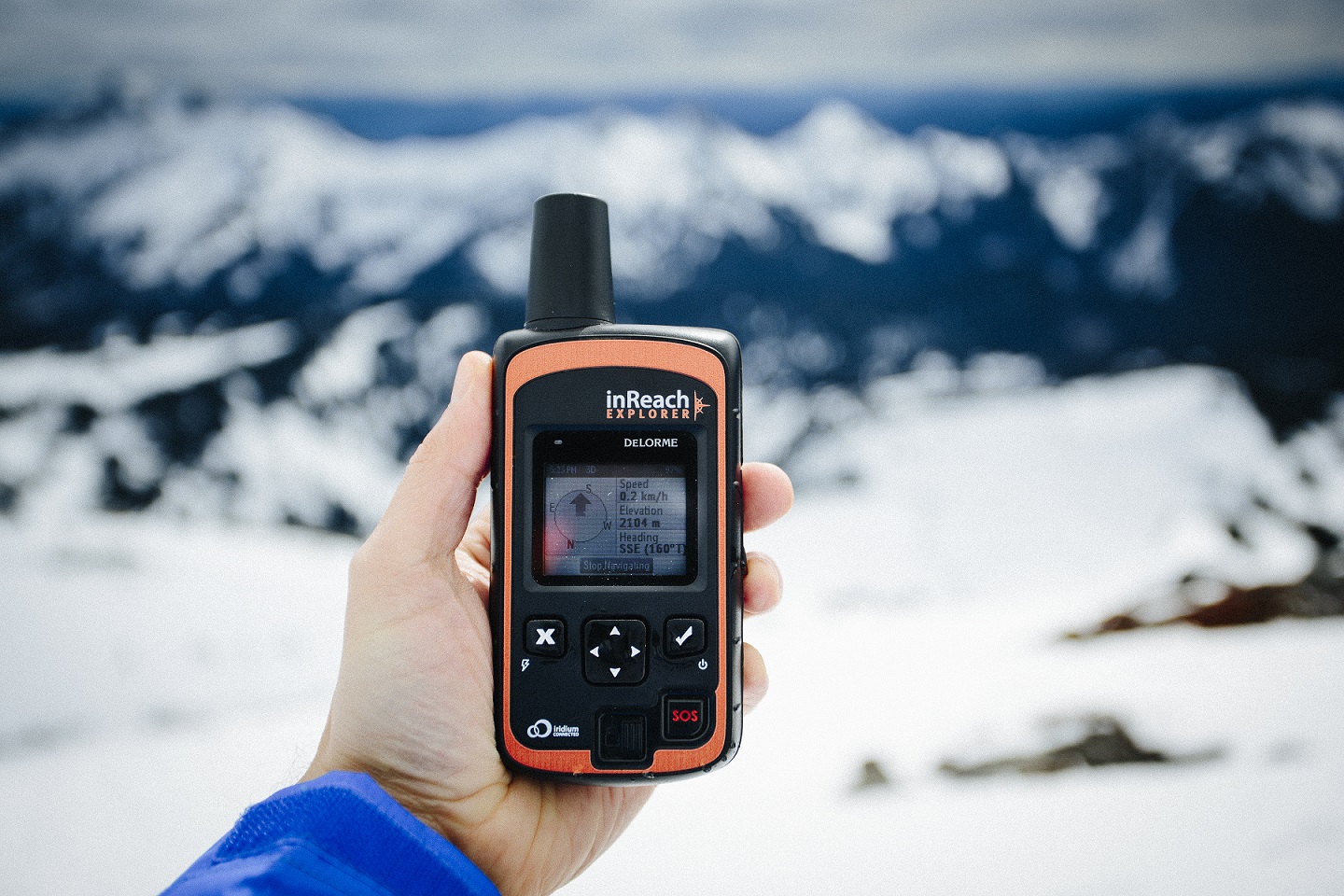
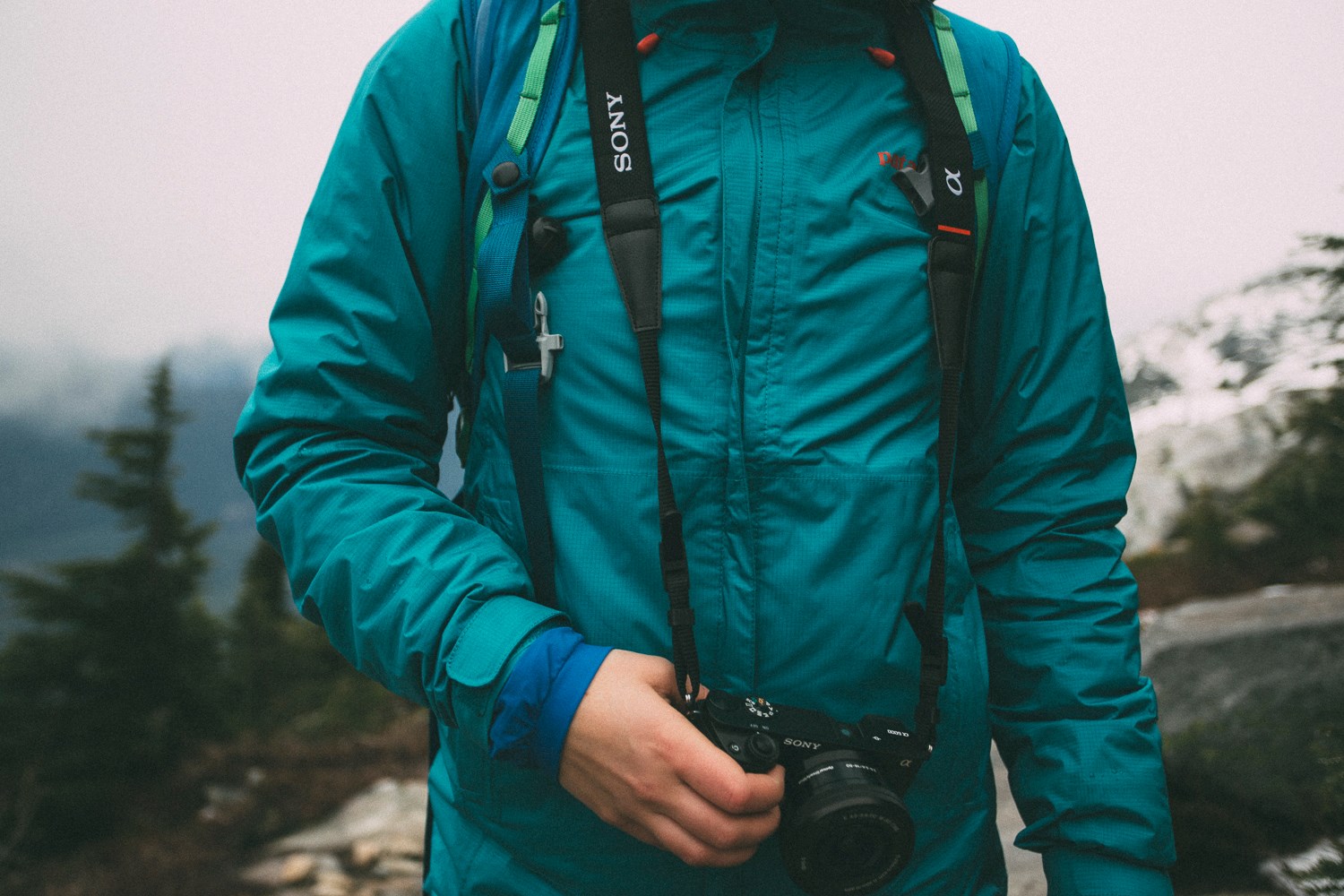
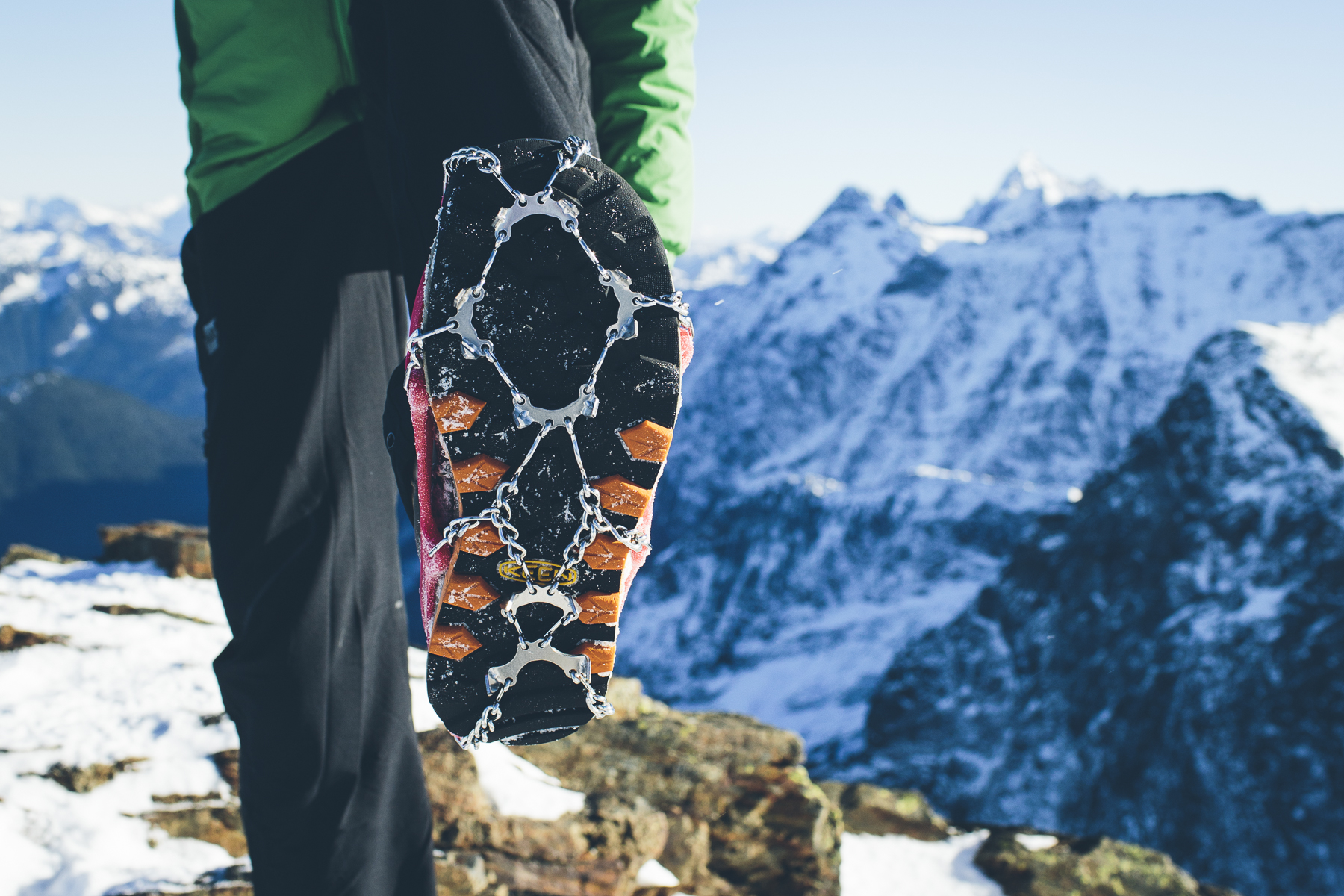
I’m thinking you need to get hooked up with the Aeropress for the best traveling/camping coffee!
We still haven’t tried an Aeropress yet! I’m liking that idea though Melanie…
BTW, I didn’t know you were a doula. That’s awesome! (I saw one of your cards on the ferry the other day…)
Richard
Love the blog, and the margin you have created in your life, but I couldnt agree more with Melanie about coffee. Aeropress is super easy, small, makes a great cup of coffee, and wont break. Also filters are very cheap, and take up little space. It travels with us everywhere, and if its not in my carry on, its in my camera bag. Its almost as important as back up hard drives, and card readers. Add a hario mini grinder (which does take a couple minutes to grind beans as finely as needed, and you have a small packable nearly perfect coffee solution.
Is Skobbler still available? I’m not finding it in the app store right now.. nothing like writing notes all over a paper map though.
Looking forward to seeing how the little Sony does as an adventure camera. We just got a Nikon s33 waterproof for the kids to play with while we’re out.
Thanks for the link to the All Adventure Parents site – loads of good ideas there!
I’ve got the same LED strip lights ready to line our canopy, you can also easily throw one 4ft length up under the hood as an engine light – you need some pos and neg wires, cable ties to route, and a basic switch for those late night under hood-issues.. You could soldier it all up at home based on blue truck then put it on red when you get there. Look at the Anti-dark LED kits on TacoWorld for ideas..
Also following the Empire..
Mike, you might have to search “GPS Nav” in the app store to find it. Good call on the under hood light! Might have to use some of the lights for that…
Some great gear you guys have there! I’ve been enjoying my Atom LT all winter long and have always enjoyed the warmth of Marmot bags.
It’s amazing how comfortable a good jacket and sleeping bag can make you! This is the first time we’ve ever spent money and quality gear and it has definitely been worth it. -R
Wow has it been almost a year already? I read you since the beginning and am excited to read more about you guys on the road soon.
Yup, this year has flown by! Thanks for following along Karie, we’re pretty excited to hit the road and get blogging again!
We actually went from the regular French press, to the aero press then back. If you like a lot of coffee then the regular French press will suit you better. Good post guys !
Yup, we have a french press and a basic pourover cone thingamagig… broke a couple of glass french presses on the road so far. Whoops!
How do you tote the 5DmkIII when on a hike or otherwise are away from the truck?
I end up carrying it 90% of the time, but otherwise I just wrap it up in a fleece or jacket and throw it in a backpack. I always bring a drybag for it just in case as well. – R
I tell you what, LED lights are so awesome. We’re in the future! I installed LED strips in my van – basically the same thing you have linked. The coolest thing is how diffuse the light is because it comes from so many little LEDs. (I have a translucent cover over mine but I think it would happen anyways) I think there are over 200 LEDS in my two light strips. I can be hunched over my table doing something, and there are still nearly no shadows below me. AND they are cheap. AND they last basically forever. AND they use incredibly low power. WOW!
Hey! What lenses do you use on Sony a6000?
Just the kit lens 🙂
What about Brazil? I wanna know your impressions and dificulties with my country.
Great adventure information. My friend Dave and I are in the process of continuing our driving adventure from Costa Rica to Argentina. In 2015, we drove Dave’s retrofitted 2003 Isuzu Trooper from Vancouver to Costa Rica . The Trooper remains stored in Costa Rica. Where can I find more of your blogs and details from Costa Rica through to Argentina?
Thanks! Check out https://desktoglory.com/blog/ for all of the blog posts.
For lights, I absolutely love the solar Luci lights. They’re LED, waterproof and amazing. We haven’t started overlanding yet – that’ll be next year, but they’re great in all applications and cheap!
This is a great post! How was the fuel availability for the jet boil?
Anywhere there is hiking/trekking to be done we found fuel for the Jetboil. El Cocuy, Colombia… throughout Ecuador (plenty of outdoor stores)… along the Cordillera Blanca in Peru… etc. We mostly just used it while trekking, but we tried to keep a little stockpile of fuel just in case we needed it.